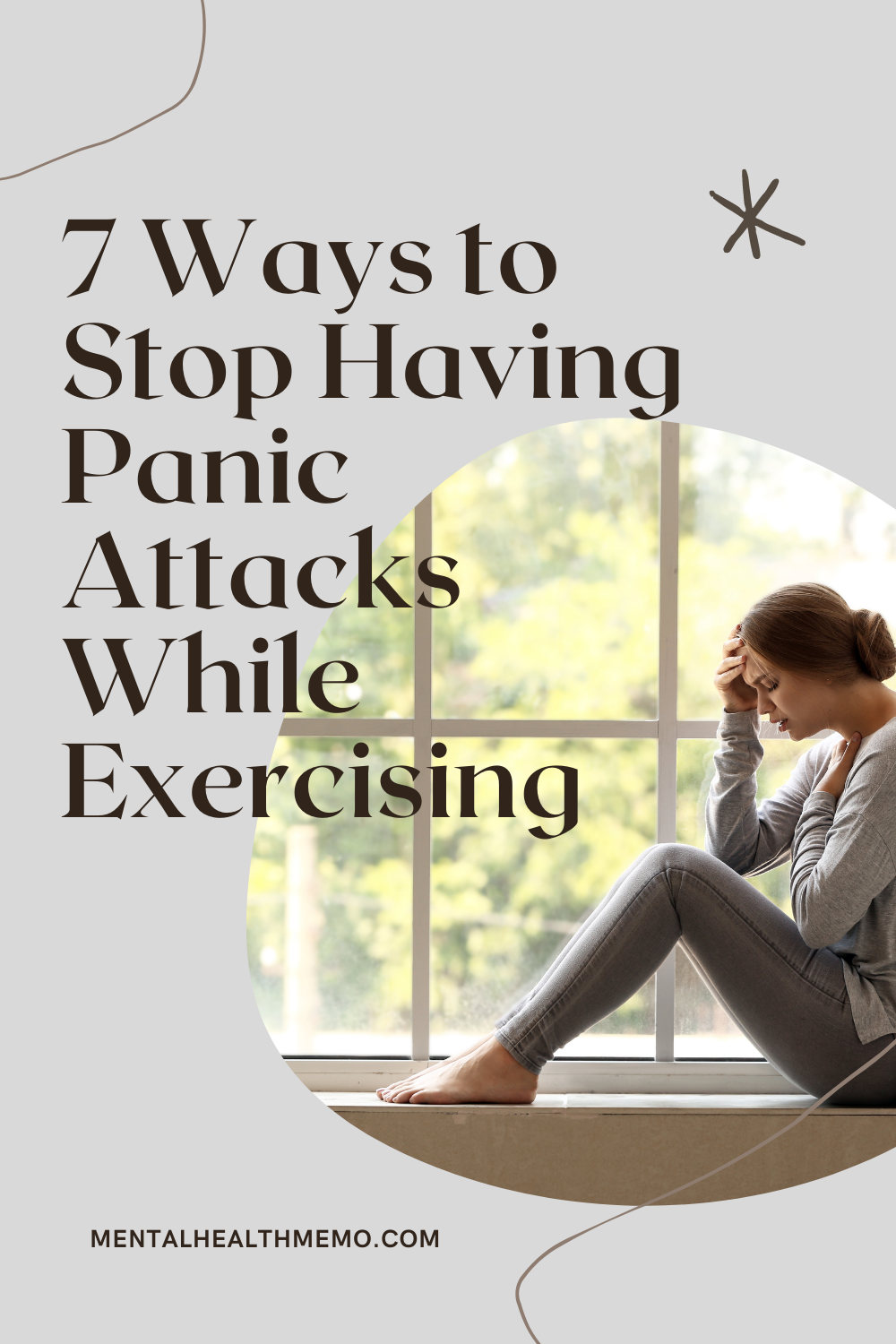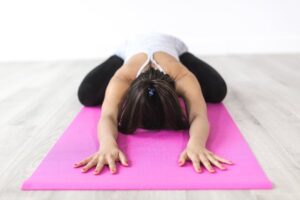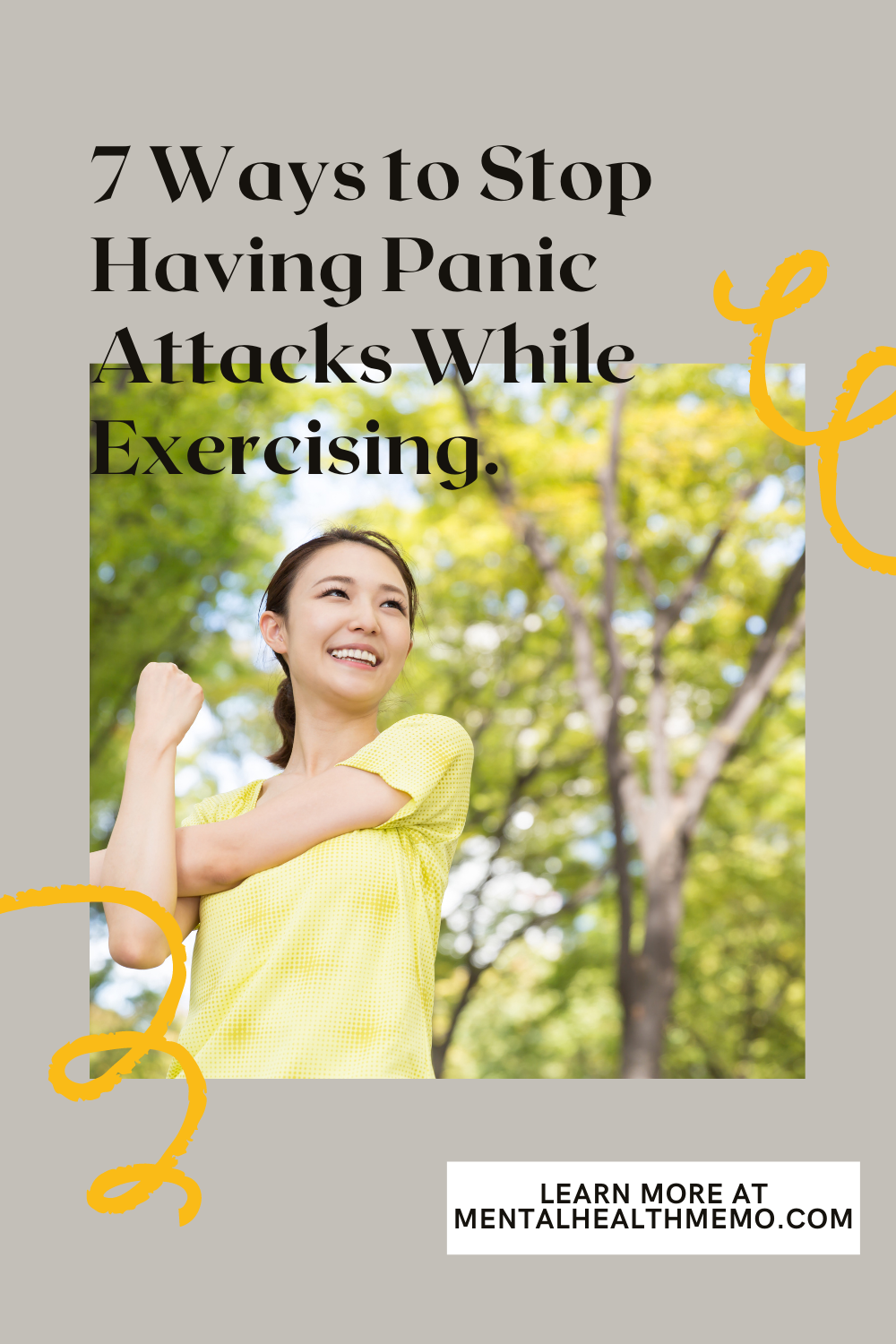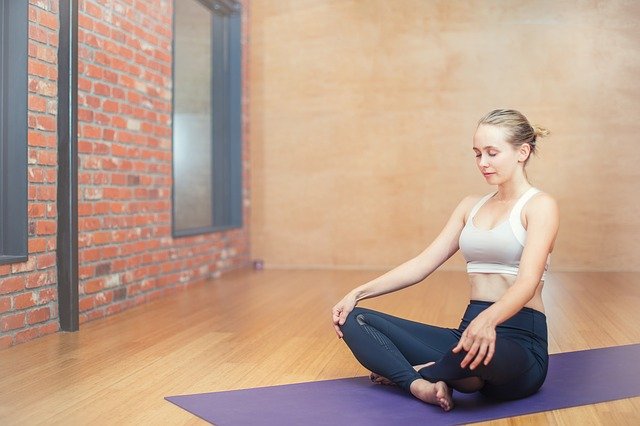The precursor to stop having panic attacks while exercising
The mental health memo for the day is: panic attacks while exercising are a whole new level of “Am I a joke to you, brain?”
Sooo, it has been a long time since I have uploaded a blog post. A lot of things have happened over the past few months for me and it has been a bit too difficult to try and pump out content when I had no energy to. I mean, I even missed the opportunity to write about the New Year and how we can thrive with our world still in a pandemic. So you know it was serious.
However, I’m finally back with a stronger dedication and focus to get more posts and videos out into the world. So I sat there pondering about what I could write about. I brainstormed, picked my mind apart, and created list after list, but I just couldn’t pick a topic. Well, the topic ended up picking me.
I’m a person that exercises daily and I definitely can go pretty hard. Usually, exercise acts as a way for me to destress, build my confidence, release tension, and help me to feel happier and calmer.
However, sometimes the things you love can betray you. And betray me exercise did.
There I was, working hard during a HIIT workout when all of sudden I felt a familiar sensation HIIT me (HA, see what I did there? Ok, sorry, moving on). I started getting dizzy, lightheaded and dissociated. It was hard to breathe, hard to see, hard to think. I tried fighting it off but once the impending doom that precedes a full-blown panic attack popped up I knew I had to pause. So I sat there and within 3 seconds I started having a terrible panic attack.
“WHY am I having a panic attack in the middle of my exercise? Doesn’t my brain know I’m doing something good for us right now? What is its problem?!” I pondered. But, we will get to the whys later.
After this incident, I started getting panic attacks almost every time I exercised. I knew this was going to be a problem so I immediately started trying to fix this issue. And that’s what we’re going to talk about today! How you can stop having panic attacks while exercising.

What is a panic attack?
Before we complicate that matter, it’s important we back it up a bit first. What even is a panic attack?
I have a whole video that explains the details of a panic attack which you can check out here.
But, to put it plainly, a panic attack is a sudden but incredibly intense feeling of fear with accompanying severe physical symptoms. The reason why someone might have a panic attack can sometimes be appropriate when faced with real danger; however, for the most part, they are a maladaptive response to situations that do not actually put us at risk.
Symptoms include:
- An impending sense of doom and danger
- Fear of losing control, dying, or going mad
- Difficulty breathing; hyperventilation
- Rapid heart rate
- Bodily aches (especially in the abdomen and head)
- Hot and cold flashes
- Numbness and tingling
- Detaching, feeling out of body
While these are not ALL the ways in which someone can experience a panic attack, these are some of the common symptoms of a panic attack.
It’s also important to note that an anxiety attack is not the same as a panic attack!
How does exercise impact panic attacks and anxiety?
Again, I have a very detailed blog post already about the amazing benefits of exercise for mental health. However, for the purposes of this article, I will go over some of the basics.
When we exercise, we release endorphins which are hormones that help us to feel happier, more alert, less stressed, and just overall better. This can be a great help for people struggling with depression, anxiety, and most mental health concerns.
Exercise is also great as it:
- Can help boost our self-esteem
- Helps our physical health which supports our mental health
- Can lead us to make new social connections which are also essential to our wellbeing
- Is a great way to practice Exposure Therapy for Panic Disorder
We will be touching on that last point in our following section, so keep reading!

Why am I getting panic attacks while exercising?
Okay, so if exercise has all these amazing benefits, why would I be having a panic attack during a workout?
I told you we’d be getting back to that previous point shortly!
Let’s begin with Exposure Therapy. It is a type of therapy used for certain anxiety disorders like Panic Disorder and OCD, as well as general phobias and Agoraphobia. As the name suggests, the point of the therapy is to expose you to what it is that makes you anxious or fearful at a level of intensity that increases with time. The point is that with exposure to what scares you and learning ways of coping, your brain will eventually learn that there is no need to panic safe around the thing that makes you anxious.
I have personally gone through Exposure Therapy for my Panic Disorder and Agoraphobia so I can say with certainty that it’s a great way to overcome these disorders. One of the things I had to do for my exposure therapy was… exercise.
You might be wondering why I’d be exercising to treat my Panic Disorder. So I’d like you to take another look at the symptoms of a panic attack. Do you perhaps see some common ground between how you feel when you exercise and when you experience a panic attack?
For example, a rapid heart rate, labored breathing, sweating, shaking, having flashes, maybe even being in pain or discomfort.
If you’ve already had panic attacks before, your brain is hypersensitive to panic-like physical symptoms and will make sure to alert you regardless of what it is that you’re doing.
To put it simply; you’re having a panic attack because your brain registered those physical symptoms of exercise (heart racing, short-breathed, sweating, etc) as a panic attack even though it wasn’t.
We also see this occur when people get overstimulated or overexcited. Their heart starts to race, they get jittery or short of breath, and even though it’s not a panic attack the brain still registers it as such. Thus, they end up getting anxious or having a panic attack.
As my therapy, I had to consistently put myself in circumstances where I felt these panic-like symptoms and just sit through them until my brain stopped associating them with panic attacks only. This is particularly important because these physical sensations aren’t necessarily bad. Your heart can race from excitement and joy. You can be short of breath because you just ran a marathon. Sweating is healthy and necessary for your well-being.
Basically, the brain is playing a trick on itself by thinking something is a panic attack when it’s not. However, exercise is vital to our health as previously discussed which is why we have to find a way to stop having panic attacks while exercising.
Okay, so how do I stop having panic attacks while exercising?
-
Find the trigger
For some, they’re exercising for the first time in a long time so this reaction may be completely new for them. However, if you’re a seasoned exercise-er (it’s a word now), it might be weird that out of nowhere you started having this reaction either again or for the first time.
Sometimes, there may be a trigger for that. For example, being overworked, feeling more stressed than usual, not taking care of your body and mindset as much, or even a difficult situation that recently happened to you (a breakup, losing a job, a big fight with your friend, etc).
For me, it was all of the above. I often don’t notice how much more anxious I’ve become until it blows up and this was a prime example of that. I really had to reflect on how much I was neglecting myself and try to find a way to improve on those behaviors. This leads us to our next point

-
Take more time for self-care and self-compassion
I KNOW you’re upset and angry that this is happening. You’re also probably hating yourself or thinking you’re weak for having this happen. However, I’m going to tell you right now that by talking to yourself in that way you’re only going to make it worse.
This is the most pivotal moment for you to practice self-compassion and self-care. It’s hard and scary to be panicking when you’re exercising. Allow yourself the space to register that this is seriously hard and it would be for anyone.
Take it from me, I had a full-blown argument with myself in my own head and I assure you I only felt 1000% worse afterward. Once I started looking at my experience with softness and compassion, I was able to start improving on my situation.
By being mean to yourself you’re only increasing your stress level which is the opposite of what you should be doing if you actually want to stop panicking while exercising.
-
Switch to gentler exercises and work your way back up (but do NOT stop exercising)
If what you’re doing right now seems too demanding on your mind and is causing it to panic, we’re going to practice self-compassion and listen. We’re going to say “Okay, I see that this is a bit too much for you right now and you’re rejecting what I’m doing. So let’s try something else”.
So if you’re doing cardio, HIIT, running, strength training, body conditioning, I recommend that you either replace these exercises with something gentler or slow them down drastically. Give your mind and body a break by going gentler and slower so that you do not panic.
This can look like doing some yoga over a Zumba class. Or, going nice and slow during your lifting session instead of pumping out reps.

Then, when your mind and body start re-adjusting again and realizing exercise symptoms are not the same as panic, you can start getting more intense again.
However, I urge you: do NOT stop exercising because you’re panicking. By stopping, you’re confirming for the brain that “Yes, these symptoms were a threat to us so I stopped”. And next time you try to exercise, it’ll be worse than before.
Panic grows and becomes more comfortable the more you let it have its way.
Please note I am NOT saying do not stop if you’re unwell or panicking really badly. Instead, I’m saying keep movement going in your life but maybe allow it to be more restorative, gentle, and slow rather than intense.
This readjustment period can vary in how long it lasts so as I keep saying, please have patience with yourself. You may find it stops then comes back or just takes a long time to go away. Regardless, for the best and fastest results, you must practice self-compassion. Here are some great self-compassion meditations to get you started on that journey!
-
Practice breathing techniques
Breathing properly while exercising is incredibly important on its own because it allows you to push harder and not get exhausted as quickly. However, it can also act as a great tool to keep your breathing stable so it doesn’t start getting too heavy and labored which could send you into a panic attack.
So as you’re doing your now-gentler workouts, focus a lot on having a good breathing technique that you can continue implementing as you increase your intensity.
It’s important to note that different exercises require different breathing techniques so I highly recommend you do some research on the type of workouts you like to do and learn the proper breathing techniques for them.

-
Be prepared to face a panic attack
I am a firm believer in being prepared. It can reduce so much anxiety especially around anxiety-inducing events; which this currently is.
You don’t have to assume you’ll have a panic attack. In fact, I encourage you to think positive and assume you WON’T have a panic attack.
However, if you DID have a panic attack, you’d want to be prepared for it, right?
I have found that “hope for the best but prepare for the worst” has been my golden motto over the years as it relates to anxiety.
Since everyone experiences panic attacks differently I can’t tell you how to prepare; only you know that. But, I can offer some suggestions and examples of what I do.
When I get panicky, I get a lot of hot flashes and I feel very suffocated. So, I’ve started to keep the window open as I exercise just in case I need some freezing Canadian winter air to help cool me down and help me to breathe better.
I also have my emergency medication ready on hand in case I need it. Next to my medication I also have some cold water, something to fidget with, and my phone in case I need to call or text someone.
Being prepared like this helps me to feel calmer when going into the exercise because I know I’m ready if I panic, and it makes the experience smoother if I do end up having a panic attack.
-
Take breaks
Similarly to exercising more gently, you should take as many breaks as you need throughout the workout, even if it’s more than usual.
This was hard for me. I am not one for breaks. I plow through everything so I don’t have to sit in a pool of my own sweat for even a second longer than I have to.
However, I had to learn to pause whenever I started feeling lightheaded or weird. During that break, I’d perhaps get some fresh air via my window or drink some cool water until I felt I could (gently) jump back in.
Again, this relates back to practicing self-compassion so that you don’t trap yourself in a negative thinking space and thus make yourself feel even worse.
Please note, as per Exposure Therapy rules I recommend that you try to push past the panic if you feel it bubbling (as we discussed it grows when you let it win), BUT if you know it’s becoming too much that is when you should take the break.
For example, I started feeling dizzy and dissociated but kept trying to work out of it for another 5 minutes before I realized it was not gonna work and I needed a moment. Self-compassion my friends!

-
Having social support
This last point may or may not be relevant to you depending on if you’re a person that likes the support of others when you’re panicking, or if instead, you prefer space.
I am an “I prefer space” panic person. So for me, I make sure to work out alone so if I do panic I don’t have another person waiting on me to feel better so we can continue.
However, if you’re a person that benefits from having others with you when you panic, consider doing your exercises with someone in your home, a friend over video chat, or even just have your dog hang around in the room.
Having that social support can be really helpful in making you feel safer and calmer while you exercise. They can then also help to de-escalate if you do end up panicking while exercising.
To summarize
Our brains are very complex and interesting organs. Exercise really helps our brain and yet it can also see exercise as a potential threat and trigger a panic attack in us. Wild.
However, with these 7 tips I implemented myself when I had this resurgence of panic attacks, you will quickly be on your way to exercising panic-free!
Let me know in the comments if this was helpful, or if you have any tricks of your own as to how to stop having panic attacks while exercising.
All my love,
T


This was such an interesting post, definetly an eye opener for me! I know people on my personal life who suffer from panic attacks and this has really taught even more about it.
Thank you so much!! I’m glad that you found it helpful 🙂
This was really interesting. I’ve never heard of people having panic attacks mid workouts before but that must be pretty scary the first time! I always think of the good it can do for the brain and not really other things that might be triggered at the same time. Sorry you had to experience that as someone who does a lot of exercise. Those are great tips for anyone struggling with a similar situation.
Thanks so much, Sophie! I know, it definitely feels counter-intuitive. I think that’s usually where the “disorder” part bleeds in. I’m so happy you found it helpful 🙂